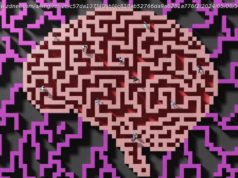A new format called TrueCut Motion promises to motion-grade movies in a way that bad processing can’t harm them.
It can feel at times like TV makers run out of advancements to make on televisions. They’ve made them brighter with the advancement of backlight technology, more colorful with the integration of quantum dot films, and crisper with the advent of 4K and 8K resolution. But one area has made only incremental progress this whole time — and that’s motion. The way you view your favorite films and TV shows at home probably isn’t the way they were intended to be watched. Processors, the brains behind the TV, have the unenviable job of translating the data coming in to fill your screen, and that includes converting 24 frame-per-second films into either 60Hz or 120Hz refresh rates. The means by which it does that is called motion processing, and some TVs do it better than others. One of the more famous examples of motion done both right and wrong was Peter Jackson’s The Hobbit franchise shot at 48 frames-per-second (known widely as High Frame Rate or HFR). It made action shots clearer, certainly, but gave the rest of the film a strange, almost soap opera-like appearance. What The Hobbit needed was some shots mastered in HFR and others not. What if that were possible for films? That some scenes got a ‘motion grade’ similar to how video editors match color grades and audio mixers do a sound mix? And, then, when that content comes to TVs we didn’t need the processor to handle motion processing? It turns out there’s a way for content to be mastered, delivered and displayed in a way that circumvents interpolation. That’s the idea behind TrueCut Motion, a new format that will soon be available on some TCL TVs. TechRadar spoke to Richard Miller (EVP of Technology) and Miguel Casillas (Senior Director of Ecosystem Marketing) who work at Pixelworks, the company behind TrueCut Motion, who explained how this technology could revolutionize motion processing and how it can be used to fix films. The content that you see on your TV can actually be broken down into a series of individual static images — what we call frames. When an object in one frame is in a different location in the next frame, we have motion. Motion smoothing builds an entirely new frame in between the two existing frames that acts as a bridge to connect them.
Домой
United States
USA — software This new TV setting could save Peter Jackson's original vision of The...






